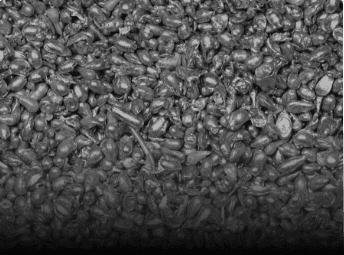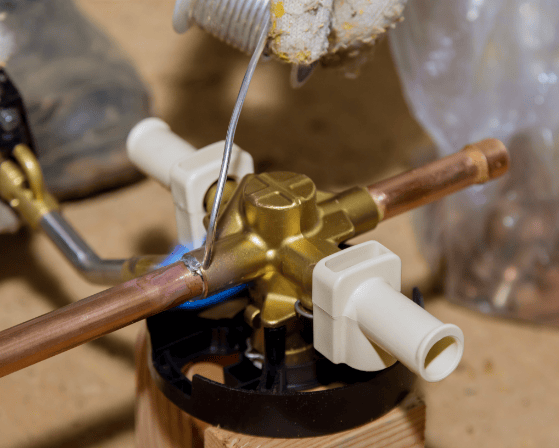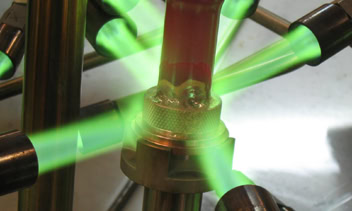What is Soldering? A Full Guide
Soldering is a joining process that uses a nonferrous filler metal, or solder, to achieve coalescence between two metal parts. When heat is applied at a suitable temperature, the solder melts and flows between the fitted surfaces of the joint. As a leading global provider of soldering and brazing solutions, we use our extensive design and manufacturing expertise to enhance brazing and soldering processes for clients in numerous industries and applications. We offer high-quality soldering pastes, with custom blends to meet varying project requirements. We also provide custom-built automated brazing and soldering machines and applicator equipment for manufacturers in brazing and soldering production.
This comprehensive guide will take an in-depth look at soldering, discussing what it is, how it works, and the different types of soldering metals and fillers compatible with the joining process.
How Does Soldering Work?
Soldering involves melting nonferrous filler metals to a specific temperature (lower than 840 ºF) to join two metals together. The base metal has a higher melting point than the solder. When heated, the solder material melts and flows between the fitted joint surfaces by capillary action. The solder then cools and solidifies to produce a strong, durable joint.
Chemical compositions of the solder can vary, with different alloys used to meet the needs of the specific application. Solder filler metals consist of either lead, zinc, or tin and fall into one of three categories:

Lead-containing alloys

Lead-free alloys

Low-temperature alloys (fusible metals)
Temperature and heating methods play a central role in the soldering process. The type of soldering material used dictates the temperature requirements for melting, which can be higher or lower for certain materials. It’s important to carefully monitor surface conditions during soldering to avoid creating weak joints or damaging base metals.
Types of Soldering
There are several different types of soldering, with each solder offering unique advantages in specific applications:
- Tin-Lead Alloys
Tin-Lead Alloys
Tin-lead filler metals are usually softer and offer less shear strength than other alloy forms, exhibiting good flow and wetting properties in many applications. These make good general-purpose solders and can be paired with corrosive, non-corrosive, and intermediate fluxes. Formulations with a higher lead content can lead to higher liquidus temperatures than alloys with a higher tin content, which are more free-flowing. However, alloy forms that use lead may not be suitable for certain applications with environmental concerns.
- Lead-Free Alloys
Lead-Free Alloys
Fusion lead-free alloys are usually based on the structure of tin solder. They combine additives like antimony, bismuth, copper, and silver to increase strength and other physical properties in manufactured products.
The most common lead-free alloys are tin-silver. These alloys have improved shear strength and enhanced creep resistance compared to tin-lead alloys. They can provide excellent electrical conductivity and steady capillary flow, leading to a slightly higher cost. However, their lower lead content can impact the wetting angle and surface energy during soldering, making the material less user-friendly than tin-lead alloys. Tin-silver alloys are suitable for soldering food-handling vessels, plumbing components, and various electronics that cannot contain lead.
- Fusible Alloys
Fusible Alloys
Low-temperature alloys, or fusible alloys, exhibit unique properties and are often used to join previously soldered assemblies while maintaining the integrity of earlier connections. Fusible alloys typically combine bismuth, cadmium, and indium to lower the melting temperature during the soldering process. These alloys are useful in more niche applications, such as fire suppression. However, they require specific heating times, temperatures, and cooling methods to maintain the desired properties.
Heating Methods
Natural gas is the most common fuel choice, which combusts when combined with compressed air to generate the necessary degree of heat. High-energy fuels such as methane or propane are also suitable for this process. Oxygen can replace the compressed air for applications requiring more intense heat.
Careful placement of the gas/air burners allows for solid joints by joining each part of the assembly to the desired temperature simultaneously, even when joining parts with different masses. Induction heat is a preferred choice in applications where flame is prohibitive, particularly in high-mass assemblies requiring a quick, localized heat source.
Common Applications of Soldering
Fusion offers soldering solutions for a breadth of applications, including the following:

Electronics
Soldering or brazing is especially effective when working with smaller or more delicate electronics. Common electrical applications include fuses, terminals, contactors, contact carriers, and assemblies.

HVAC
Tin-silver solders can be suitable for HVAC connections due to the higher strength and ductility, as well as not overheating the joining tubes to preserve its strength.

Jewelry
Soldering is commonly used to craft jewelry components. This process offers high precision when joining popular jewelry metals such as brass, copper.

Metalwork
This process creates a strong, durable joint in sheet metal objects, including cans for food, oils, adhesives, etc;, roof flashing, and rain gutters.

Musical Instruments
Soldering can connect critical components in brass instruments, as well as some wind instruments.

Plumbing
Brazing and soldering can enhance joint quality in a range of plumbing components. Common applications include copper pipes, faucets, and pipe fittings.

Refrigeration
High-temperature silver soldering is useful for assembling and repairing some refrigeration components; manufacturing of ice making equipment.
-
Electronics
Electronics
Soldering or brazing is especially effective when working with smaller or more delicate electronics. Common electrical applications include fuses, terminals, contactors, contact carriers, and assemblies.
-
HVAC
HVAC
Tin-silver solders can be suitable for HVAC connections due to the higher strength and ductility, as well as not overheating the joining tubes to preserve its strength.
-
Jewelry
Jewelry
Soldering is commonly used to craft jewelry components. This process offers high precision when joining popular jewelry metals such as brass, copper.
-
Metalwork
Metalwork
This process creates a strong, durable joint in sheet metal objects, including cans for food, oils, adhesives, etc;, roof flashing, and rain gutters.
-
Musical Instruments
Musical Instruments
Soldering can connect critical components in brass instruments, as well as some wind instruments.
-
Plumbing
Plumbing
Brazing and soldering can enhance joint quality in a range of plumbing components. Common applications include copper pipes, faucets, and pipe fittings.
-
Refrigeration
Refrigeration
High-temperature silver soldering is useful for assembling and repairing some refrigeration components; manufacturing of ice making equipment.
Advantages of Soldering
Soldering offers a range of advantages:
Cost-Efficient
Soldering utility costs are less expensive due to the lower temperature required to melt the filler metal.
Ease of Use
Soldering is a relatively simple process and does not require post-processing heat treatments.
Lower Heat
Soldering requires lower processing temperatures, which helps prevent material distortion.
Versatility
Soldering is an ideal solution for a range of components. It can join dissimilar base materials, thin-walled parts, and delicate electronic components.
Soldering Services From Fusion, Inc.
Fusion, Inc., is a family-owned business with decades of industry experience developing carefully-blended paste solder alloys for manufacturers in a range of industries. Today, we are a leader in brazing and soldering automation. We take a process approach for our diverse application capabilities, which consists of the following elements:

Applicator Equipment

Automated Machines

Soldering and Brazing Paste Alloys
Contact us today or request a machine consultation to discuss working with Fusion on your soldering application.



